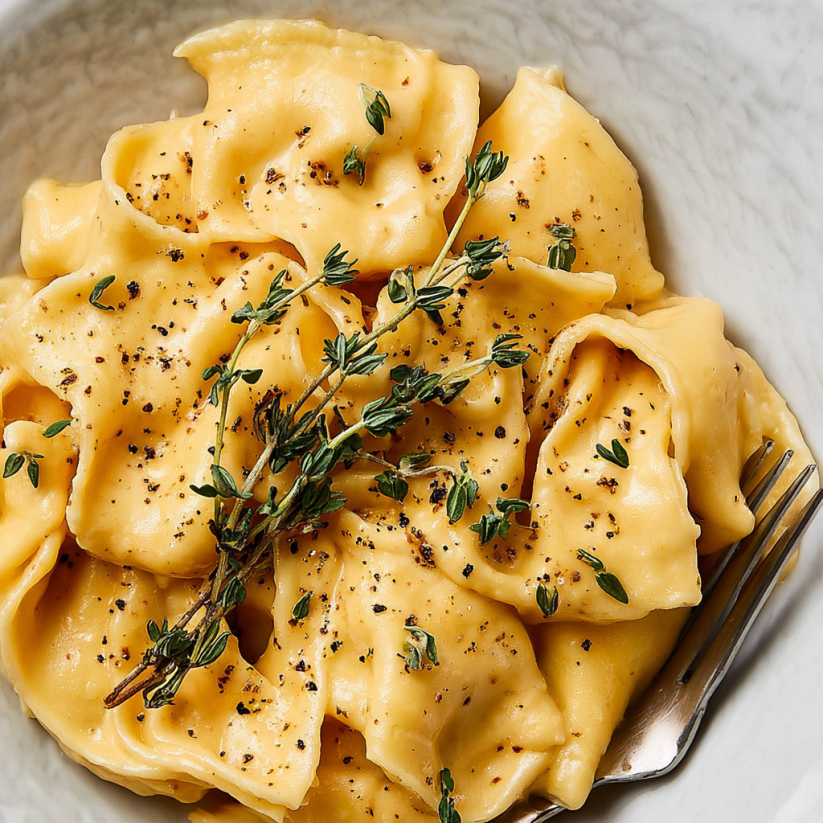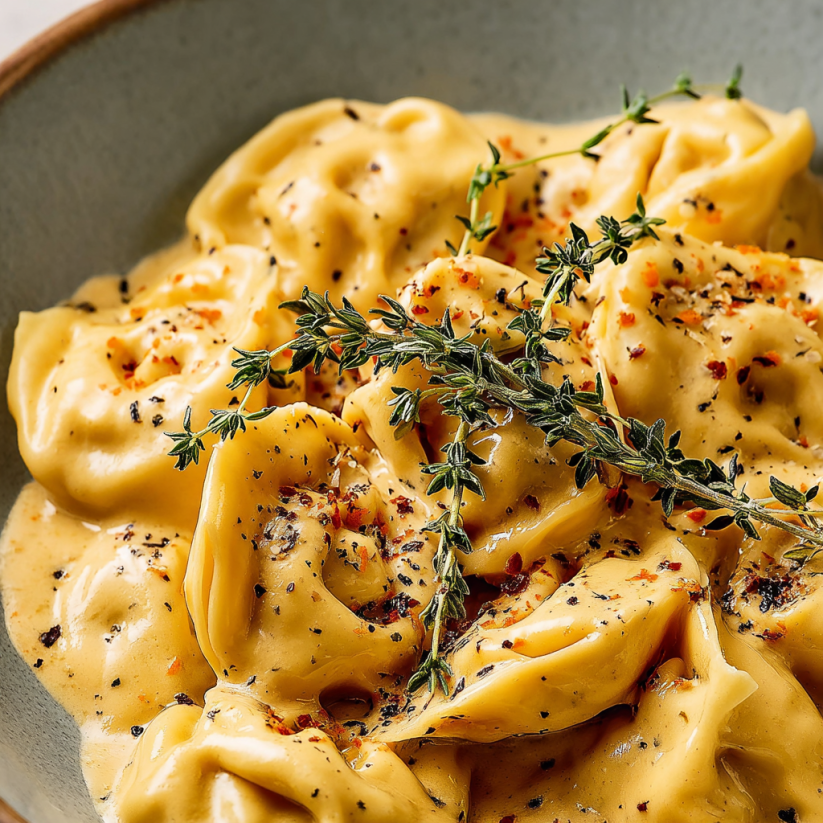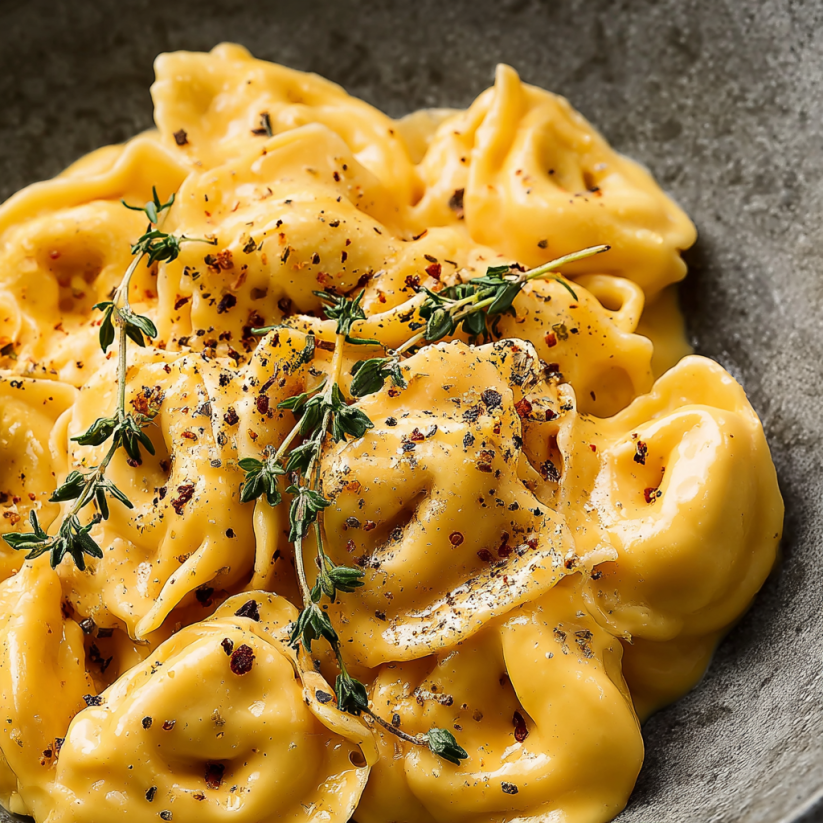 Save Pin
Save Pin
Butternut squash mac and cheese takes the comfort of a classic favorite and adds a cozy autumn twist. The creamy sauce gets natural sweetness and velvety texture from butternut squash. With herby notes of thyme and a double cheese blend, this dish sneaks in veggies while feeling totally indulgent. It is my top way to add some fall feels to a busy weeknight—and nobody has ever noticed the extra veg.
I threw this together on an autumn night for a family dinner and we scraped the pan clean. What surprised me is how the goat cheese and squash together make it taste fancy with almost no work.
Ingredients
- Butternut squash: frozen cubes make this hands-off or you can use fresh for stronger flavor look for squash with firm skin and deep orange flesh
- Butter (unsalted): lets you control seasoning and helps the sauce gloss
- Salt and black pepper: season every layer to keep flavors lively
- Flour: helps make the creamy roux base use all purpose for best results
- Whole milk: brings out creaminess avoid skim or watery milk for best sauce body
- Cheddar cheese (sharp): melts into a classic tang and color always buy in a block and shred yourself for smoothest melt
- Goat cheese (crumbled): adds a delicious tang and creamy lift look for fresh chevre not aged
- Dried thyme: adds a savory fall note fresh thyme is even better if you have it
- Garlic powder: boosts umami in the sauce choose a fine ground for even mixing
- Cayenne powder: adds a whisper of warmth you can skip for kid friendly but I love the depth
- Pasta (large shells or twirly shapes): hold the sauce best look for pasta with grooves or hollows
- Pasta water (reserved): to adjust sauce consistency gives it perfect cling
Step-by-Step Instructions
- Prep the Squash:
- Combine frozen or peeled squash cubes with a splash of water in a skillet. Cover and steam on medium until squash is fork tender about seven minutes. Stir occasionally so nothing sticks. Uncover the pot then cook until water is gone and squash is soft and slightly caramelized. This helps concentrate flavor.
- Build the Roux:
- Add butter salt and pepper to the skillet. Stir until butter melts and coats the squash. Sprinkle flour over and stir constantly to form a paste. Cook until flour is absorbed and you smell a warm toasty aroma. This step gives the sauce its velvety finish.
- Make the Cheese Sauce:
- Slowly pour in the milk a bit at a time stirring smoothly so lumps do not form. Add garlic powder cayenne and thyme. Continue stirring and bring to a gentle simmer. Toss in both cheddar and goat cheese. Stir non-stop until everything melds together into a thick creamy sauce. Let cool slightly—this keeps it silky and prevents separation.
- Boil the Pasta:
- While sauce is cooling boil pasta in salted water three minutes shy of the timing on the box. Save some pasta water before draining. Return the cooked pasta to its pot.
- Puree the Sauce:
- Once the sauce is not piping hot transfer it gently to a blender. Puree until completely smooth and velvety. Do this in two batches if needed so it does not overflow.
- Combine and Finish:
- Pour the pureed cheese sauce over the cooked pasta in the pot. Stir with care so every shell is coated. Heat over low until the sauce thickens and clings perfectly. Add splashes of reserved pasta water to get your ideal creamy texture. Let the dish rest for five minutes so the sauce sets up and becomes luscious.
 Save Pin
Save Pin
The tang that goat cheese brings is my absolute favorite part. My nephew once called this magical orange pasta after a fall picnic—it made me grin for days.
Storage Tips
Place leftovers in an airtight container and keep in the fridge for up to three days. When reheating add a splash of milk or water to loosen the sauce since it thickens as it chills. For longer keeping portion into ramekins and freeze for a quick thaw and heat meal on busy nights.
Ingredient Substitutions
You can use sweet potato instead of butternut squash which gives similar body and sweetness. If cheddar or goat cheese are not your thing swap in gruyere fontina or cream cheese for a milder creamy sauce. To make gluten free use chickpea or lentil pasta—just be careful with cooking time as they get soft quickly.
Serving Suggestions
Serve with a simple leafy green salad for a crisp contrast. Top with extra thyme and a scatter of toasted breadcrumbs if you want crunch. For a dinner party make this the centerpiece with sautéed mushrooms and a big bowl of roasted beets. Try serving it as a Thanksgiving side instead of traditional mac and cheese.
 Save Pin
Save Pin
Cultural and Seasonal Touch
Butternut squash is a staple in fall and winter kitchens. Adding it to macaroni and cheese is a nod to classic southern vegetable bakes with a modern twist. My grandmother always baked squash casseroles for holidays so making this feels like a fresh version of those comfort foods.
Commonly Asked Questions
- → Can I use fresh instead of frozen butternut squash?
Yes, fresh butternut squash works well. Simply peel, cube, and cook until tender before adding to your sauce base.
- → What pasta shapes work best?
Large shells, cavatappi, or gemelli are excellent choices as they hold sauce beautifully and deliver satisfying texture.
- → How do I make the sauce extra creamy?
Ensure the roux is well blended and add milk gradually, stirring constantly. Pureeing the squash mixture yields a luxuriously smooth sauce.
- → Is goat cheese necessary?
Goat cheese adds tangy depth but you can use all cheddar if you prefer, or substitute with your favorite soft cheese.
- → Can I prepare this ahead of time?
Yes, store in an airtight container in the fridge for up to three days and gently reheat with a splash of milk to loosen the sauce.
- → What sides pair well?
Bright salads or sautéed vegetables offer a fresh contrast to the creamy pasta, great for balancing flavors and textures.
